Le Belle Captive (The Beautiful Captive)
The filmmaker that brought Le Belle Captive to life, Alain Robbe-Grillet is known in France as an author of books rather than a director of films. Since the 1950s, his writing has challenged and subverted the rigidity of French literature. By experimenting with form in The Erasers (1953), The Voyeur (1955), Jealousy (1957), he produced a modern receptivity to writing that has been labelled as the Nouveau Roman (New Novel) movement. Robbe-Grillet believed literature should be about the randomness of human emotion rather than an exercise in conservative psychoanalysis and habitual metaphor. By presenting dream-like association to his work Robbe-Grillet's stream of consciousness style abandoned concepts of reality. Because of this, his books are considered unfocused and vague. It wasn't until the 1960s that he decided to move away from the page and stepped behind a movie camera…
Not as popular or as renowned as a maker of movies, Robbe-Grillet has carved a unique subjectivity into his cinema by focusing on the nature of dreams. He is best known for his script work on Alain Resnais' Last Year in Marienbad (1961) and his most famous work as a director Trans-Europ-Expres (1966). It wasn't until 1983 when Robbe-Grillet decided to make a movie based on the painting Le Belle Captive by René Magritte that his work captured the spirit of our subconscious thoughts.
Walter is relaxing at the Matchu Club, smoking a cigarette and drinking a tomato-vodka. He observes monotonous dancers shuffling to monotonous music when suddenly a beautiful woman appears. Embraced in a slow waltz with Walter she exclaims, 'I have no name'. The bartender informs Walter of a phone call. He has a new job: to deliver a letter to Henri de Corinthe. When he returns to the bar the dancers shuffle to the seductive music but the women has gone.
On his way to deliver this letter, Walter discovers a blooded figure in the road. Going over to help, he realises it's the women with no name. Trying to find a doctor, they arrive at a mansion and ask to use a telephone. A group of men stare at them with blank expressions. The woman drinks blood from a wine glass. They are shown to a room. Once inside, the door is locked. Walter and the women make love. The next morning, the mansion is deserted and the nameless woman is nowhere to be found. Walter has two bite marks on his neck…
At a café Walter looks at a newspaper and reads the headline: 'Kidnapped on eve of marriage Henri de Corinthe's fiancée vanishes'. The picture is of the nameless woman. Going back to the mansion Walter discovers the front gates are locked. A passer-by tells him the house hasn't been occupied in years. Outside on the pavement is a blooded high-healed shoe that is covered in blood. He takes it. Visiting Henri de Corinth to find the pieces of this puzzle, Walter finds him dead on the floor with a bite mark on his neck. Now that Henri de Corinthe is dead. Walter decides to open the letter. It's a photograph of the blooded high-healed shoe…
There is one thing that niggles at your brain during the opening sequence of this movie: is this all a dream? Watching this movie for the first time the experimental style can be unnerving. After about 10minutes, you discover La Belle Captive [The Beautiful Captive] is a movie about imagination and death. It has no foundations in reality even though Robbe-Grillet likes to toy with audience expectation. It's an abstract journey of a character jailed inside his own mind-bending vision of mortality. Unable to wake from this dream of death, Walter imagines himself as a quirky noir-like detective caught in a web of deception. Meeting the femme-fatal at the bar becomes part of his downfall. The mystifying rouse of sexuality distracts him from his purpose: to deliver a letter. We know nothing about this man or his purpose. The tangible nature of reality is swept from under our feet.
The sequence that purports this imagination of death happens after Walter finds the mysterious women in the road. Looking to use a telephone to contact a doctor, Walter enters the mysterious mansion. Clusters of indifferent men enclose on them as lightening thunders throughout the room. It's a nightmarish vision from the guts of hell ('Their speech resembled mine, but their words held no meaning'). They take interest in the nameless woman and she is offered a drink. The wineglass is filled with blood. The men back away. Walter smashes the glass on the floor. A man takes them to a room and locks them in. They have sex. The scene is full of sexual energy that is ready to break from the frame.
The next morning when Walter wakes up the woman has disappeared and everything is in ruins. The room is covered in newspapers and broken glass. A painting has appeared above the bed: Le Belle Captive by René Magritte. As Walter walks around the house, you can't help but get the sense he is walking through a nightmare.
By distorting conventional filmic elements like plot, logical notions of time and refusing to give insight into character psychology Robbe-Grillet subverts our pre-conceived ideas of cinema. In this respect, Le Belle Captive captures the essence of purgatory in which life and death become so interwoven it's difficult to distinguish between the two.
Le Belle Captive contains a multitude of themes, which makes it a veritable cinematic experience. It adopts the sensibilities of painting (René Magritte), Greek myth (Bride of Corinth), literature (the introspective voice-over), classical music (Schubert Quartet 'The Pretty Girl and Death') and Eastern European folklore (sucking blood to absorb ones soul). If you're a film studies student, this is perfect stomping ground for a 10,000-word essay.
Disk: This DVD by Second Sight doesn't disappoint. Transferred from the original 35mm print, the picture is spotless and the sound taken from the original mono track comes to life when the music invades our sound systems. The subtitles match the French dialogue like a glove. One of the things this disk lacks is an informative booklet introducing the world of Robbe-Grillet. However, there is an informative commentary track by two Robbe-Grillet experts. Roch C. Smith (author of Understanding Alain Robbe-Grillet) and Anthony N. Fragile (author of The Erotic Dream Machine: Interviews with Alain Robbe-Grillet on His Films) illuminate the abstract style of Le Belle Captive so we can better understand its bizarre nuance. These guys know their stuff. It's educational without being condescending. They add a new dimension to the experience of watching the film as all good commentaries should.
Verdict: Le Belle Captive is a fantastic film that evokes the distilling mood of nightmares. In this respect, Robbe-Grillet could be considered a precursor to the metaphysical work of David Lynch. Watch out for the red iconography, the high-healed shoe, the reoccurring suitcase, wine glasses and frame within frames.

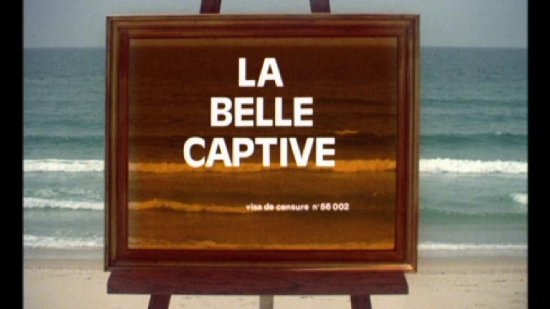
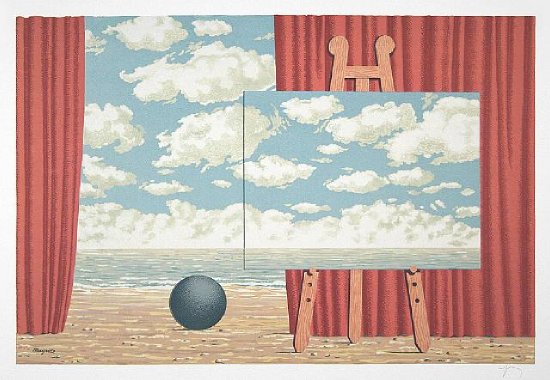
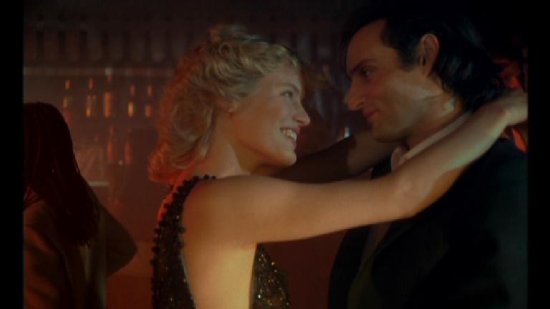
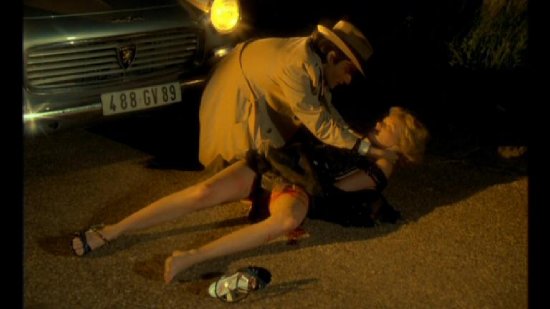
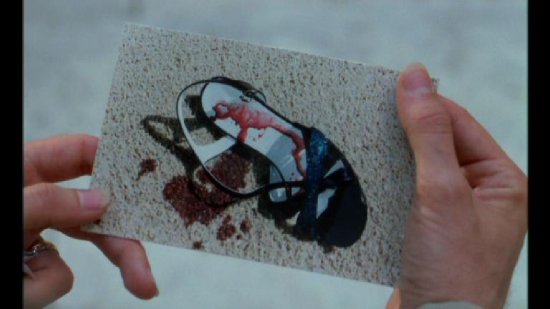
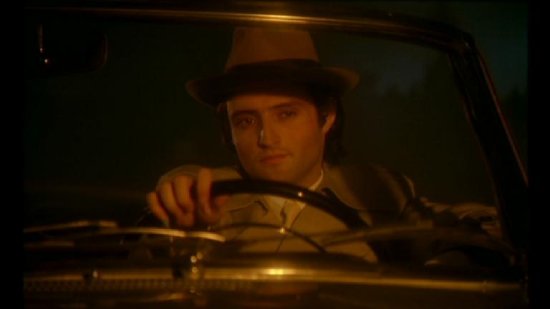

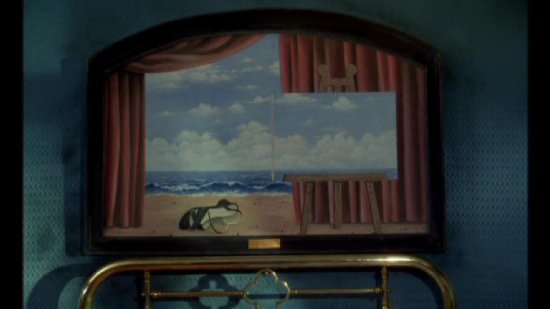
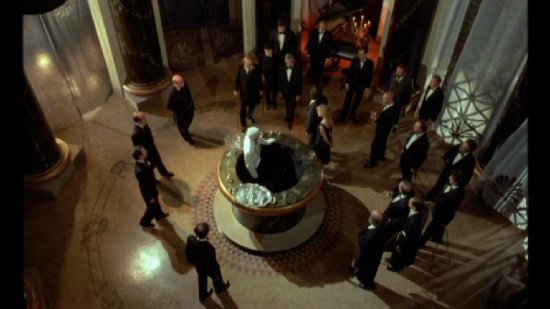
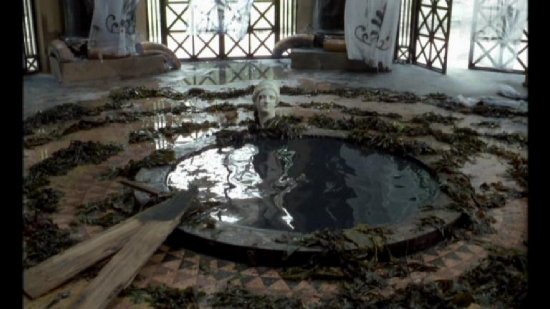
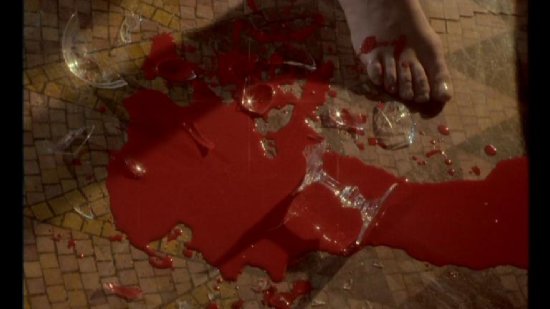
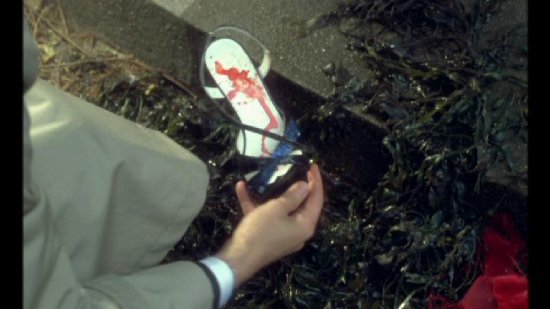
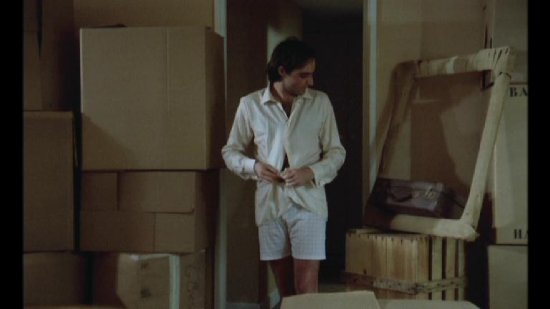
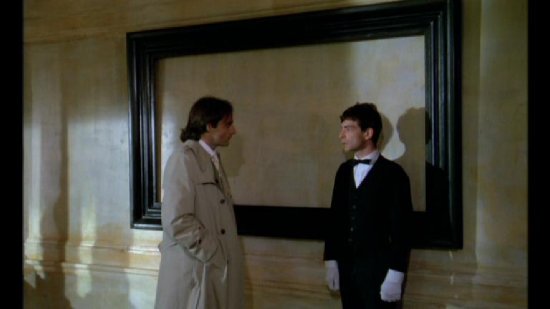
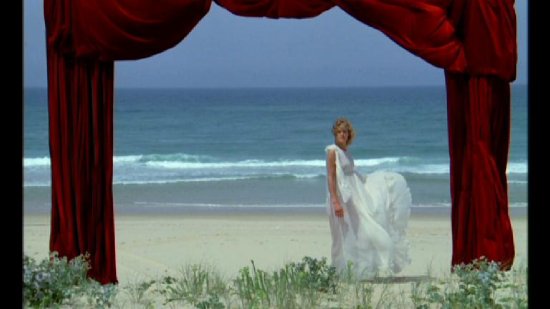
Your Opinions and Comments
Be the first to post a comment!